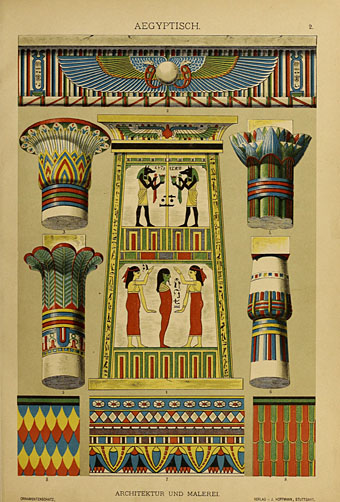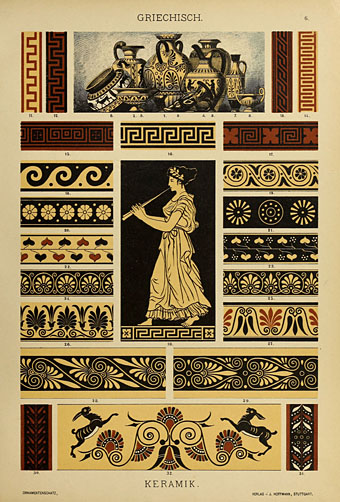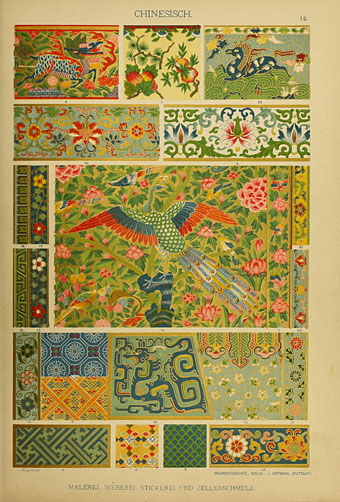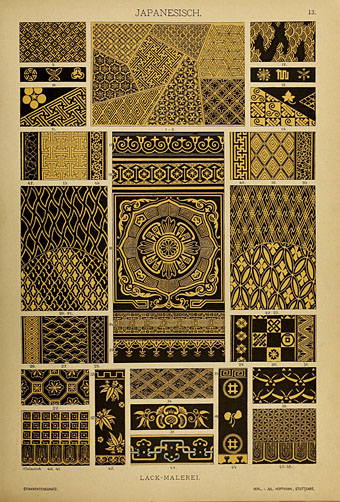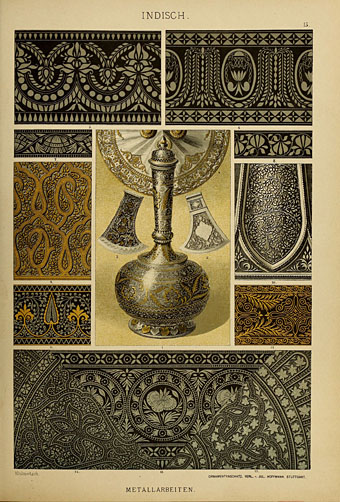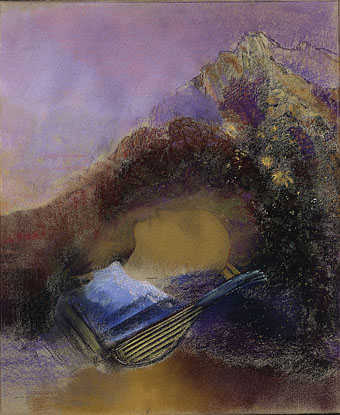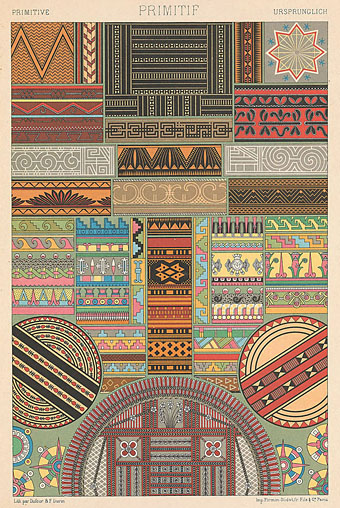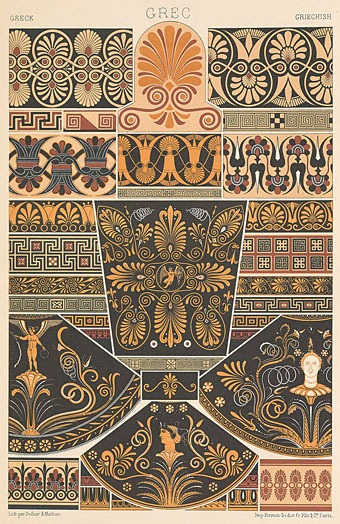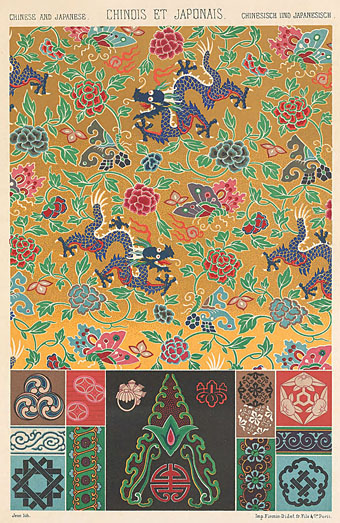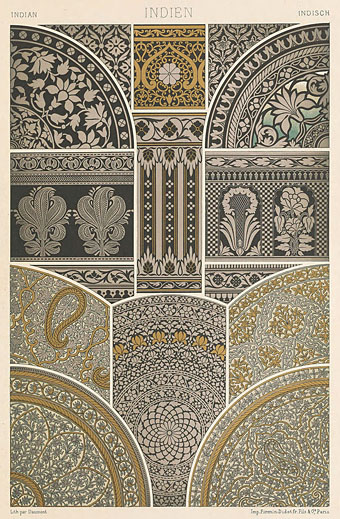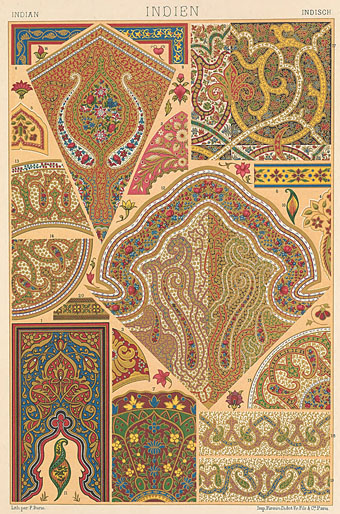If Racinet’s Polychromatic Ornament (1869–1873) was the French answer to The Grammar of Ornament (1856) by Owen Jones, then Heinrich Dolmetsch’s Der Ornamentenschatz (1887) is the German response to both, an equally lavish collection of colour plates showing ornamental decoration through the ages. Dolmetsch’s book follows the same chronological format as its counterparts, the main difference being an emphasis on objects as much as patterns or small portions of design. And being a German book, there’s rather more attention given to the German Renaissance than you might find elsewhere.
Month: February 2019
Weekend links 450
Orpheus (c. 1903–1910) by Odilon Redon. One of 30,000 public-domain images from the Cleveland Museum of Art’s collection.
• Network DVD has announced the premiere home release of Orson Welles’ Great Mysteries, a British TV series that ran from 1973 to 74. Welles’ involvement was limited to introducing each episode but the series itself was one I enjoyed a great deal: 26 short adaptations of period mystery stories that featured a wealth of British and American acting talent. The theme by John Barry was an additional bonus.
• The trailer for Apollo 11, a documentary by Todd Douglas Miller which presents for the first time the 70mm footage recording the Earth-bound parts of the Moon mission. Related: Michelle Santiago Cortés on how NASA used art to shape our vision of the future.
• At Dangerous Minds: a preview of Third Noise Principle, the latest in an excellent series of electronic music compilations from Cherry Red, and Cosey Fanni Tutti talks about her first solo album since 1983.
“The way I understood theory, primarily through popular culture, is generally detested in universities,” Mark [Fisher] told me in 2005, when I interviewed him for the Village Voice. “Most dealings with the academy have been literally clinically depressing.” He darkly surmised that his blog, K-Punk, and the surrounding blogosphere, “seemed like the space—the only space—in which to maintain a kind of discourse that had started in the music press and the art schools, but which had all but died out, with appalling cultural and political consequences.” Mark and the Village Voice are both dead now, leaving unfathomable voids in their wake.
Geeta Dayal on Mark Fisher
• At The Witch Wave: Peter Bebergal and Pam Grossman discuss Bebergal’s latest book (also my current reading), Strange Frequencies: The Extraordinary Story of the Technological Quest for the Supernatural.
• At Bandcamp: another release from the retro-synth cosmos of Jenzeits, and Ufology , an investigation of Britain’s flying-saucer landscape by Grey Frequency.
• Surprising collaboration of the week: Beth Gibbons and Krzysztof Penderecki have made a new recording of Henryk Górecki’s Third Symphony.
• Alchemy (1969) the debut album by the Third Ear Band, receives an expanded reissue next month.
• The Burn: a science-fiction story by Peter Tieryas with illustrations by Arik Roper.
• Mix of the week: Self-Titled Needle Exchange 275 by Black To Comm.
• Amy Turk plays Bach’s Toccata and Fugue in D Minor on her harp.
• Chrismarker.org is seeking donations.
• Mystery Train (1955) by Elvis Presley | Mystery R.P.S. (No 8) (1981) by Holger Czukay, Jah Wobble, Jaki Liebezeit | Mystery Room (1985) by Helios Creed
Racinet’s Polychromatic Ornament
The publication of Owen Jones’ landmark volume, The Grammar of Ornament (1856), prompted decoration curators in other countries to try their hands at equally lavish collections of historic ornament. The first edition of Auguste Racinet’s L’Ornement Polychrome was published by Firmin-Didot from 1869–1873; a second edition appeared in 1885–1887. The plates here are from a British reprinting of the first edition from 1877, and are a recent addition to the Internet Archive’s collection of scanned volumes. I’d seen some of these plates before in a Flickr set but you can’t always trust Flickr users to upload a complete collection of anything (or label things adequately), and the set omitted the introductory material.
Racinet’s book follows the format of Jones’ plates in attempting to represent multiple examples of a historic period (or a regional style) on a single page, but does so with greater ingenuity. Many of the pages achieve this so well that they’re notable pieces of design in themselves. Another thing the Jones and Racinet volumes share which we miss is the metallic inks; Racinet’s pages are embellished in gold and silver which reproduce here as brown and grey. Some scanned books really need to be seen in their original printings.

